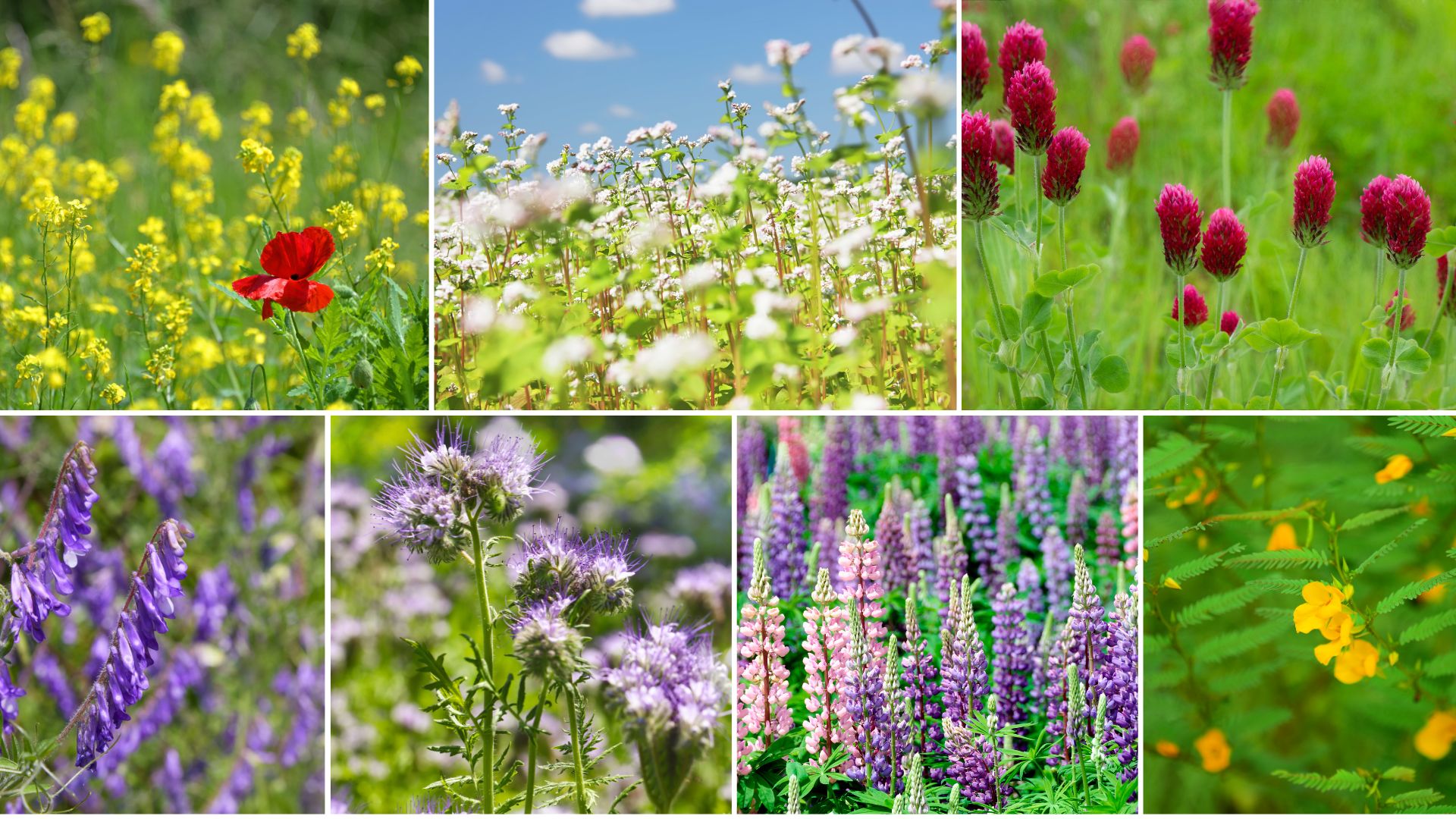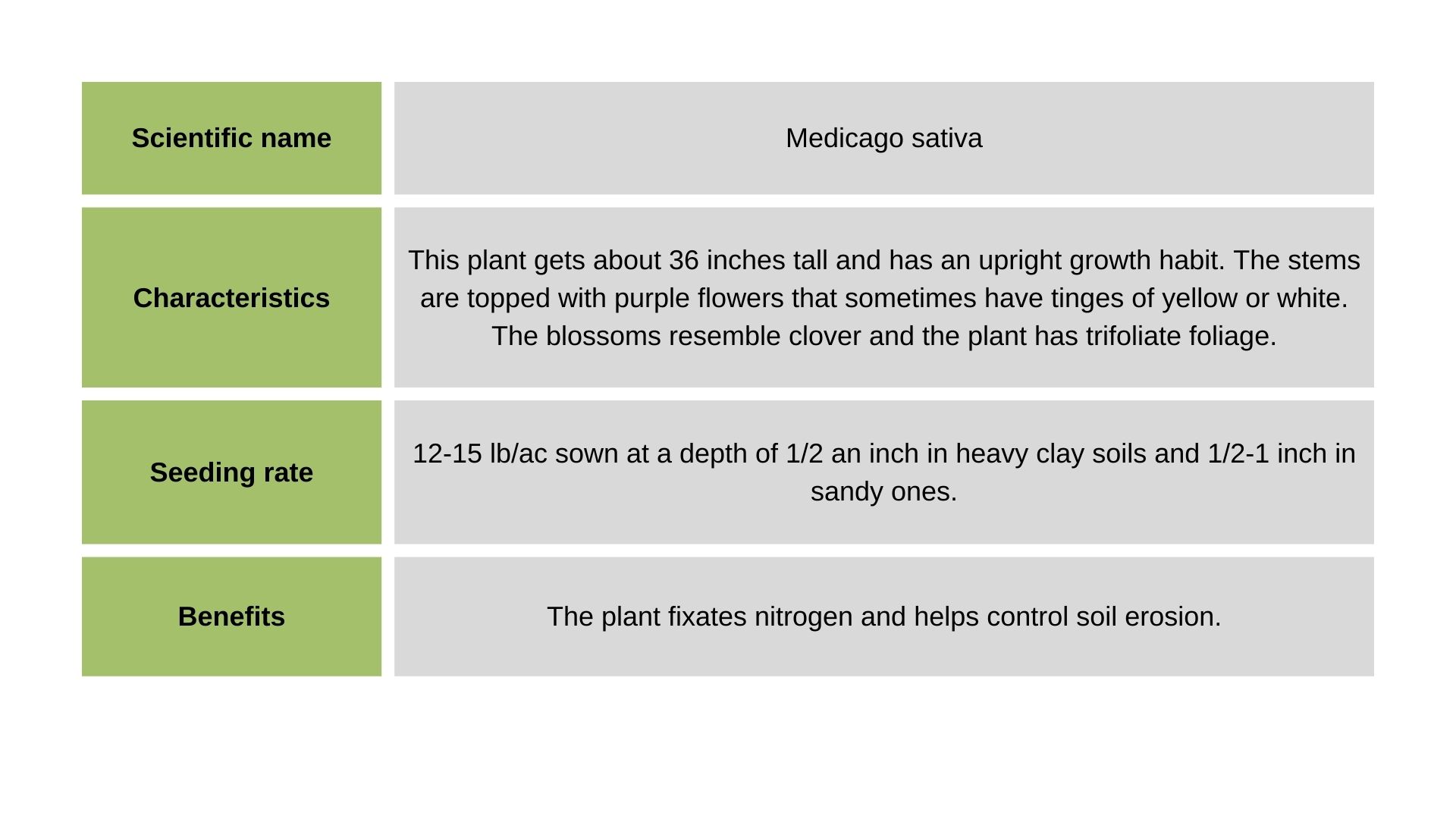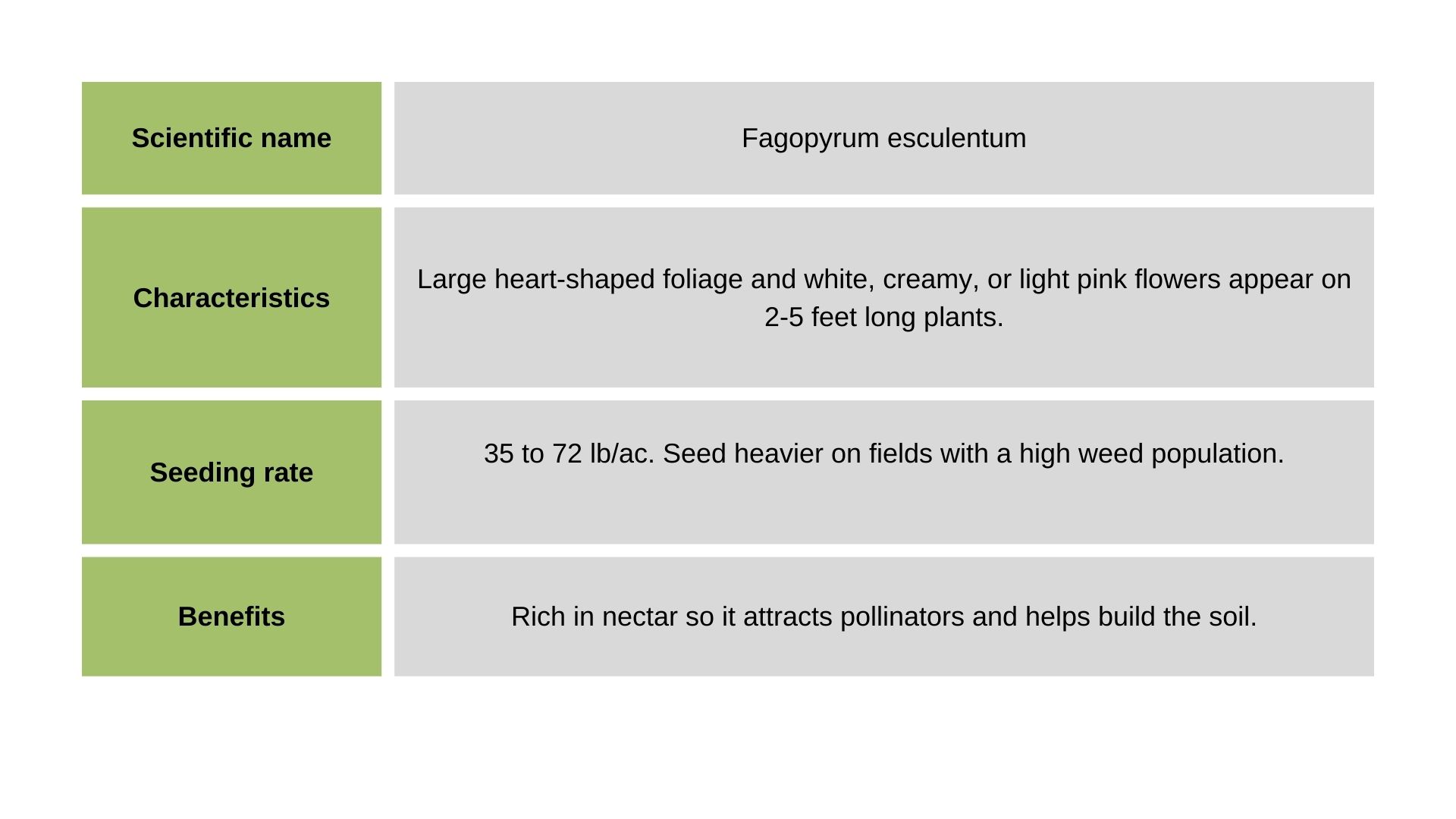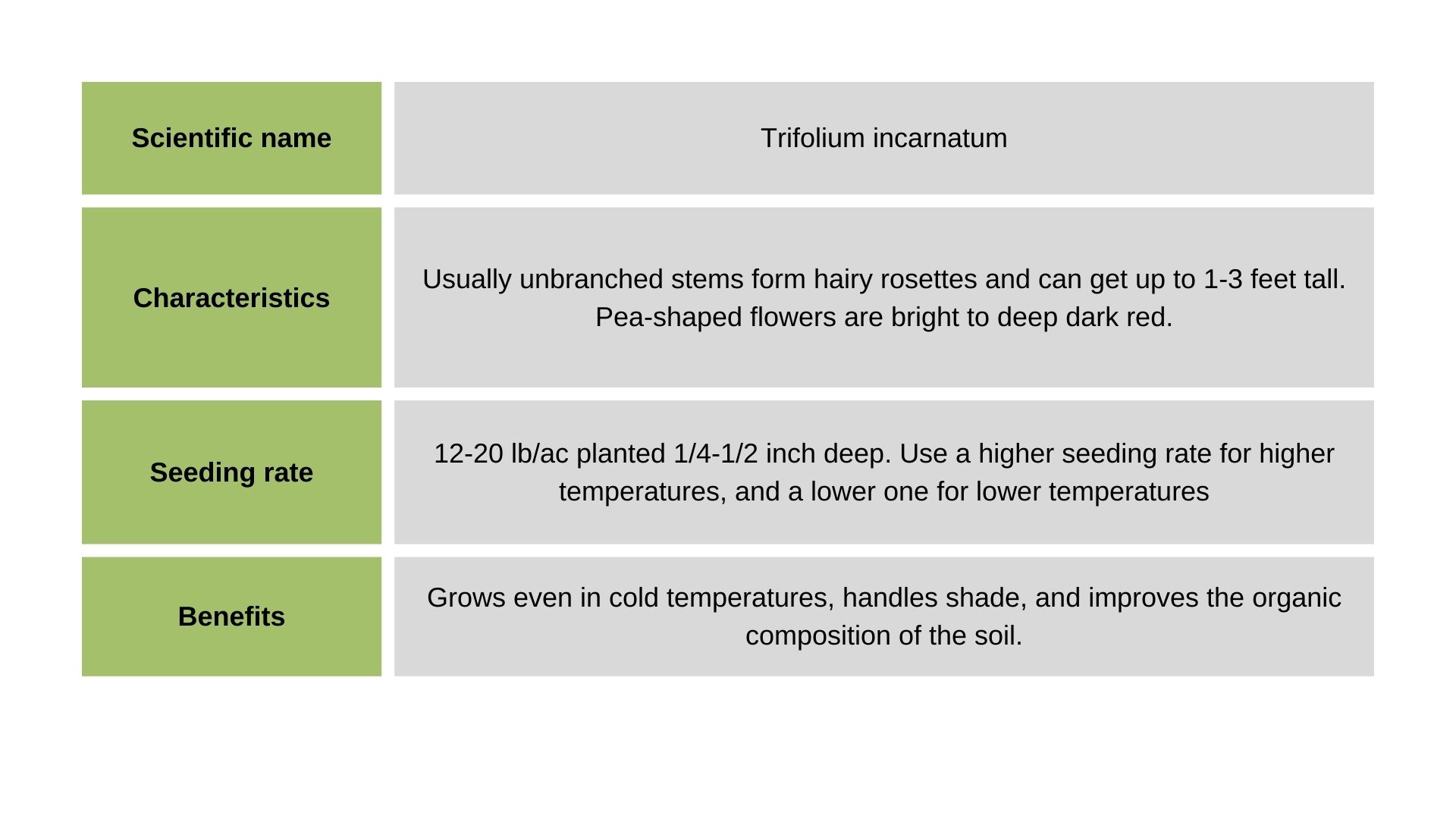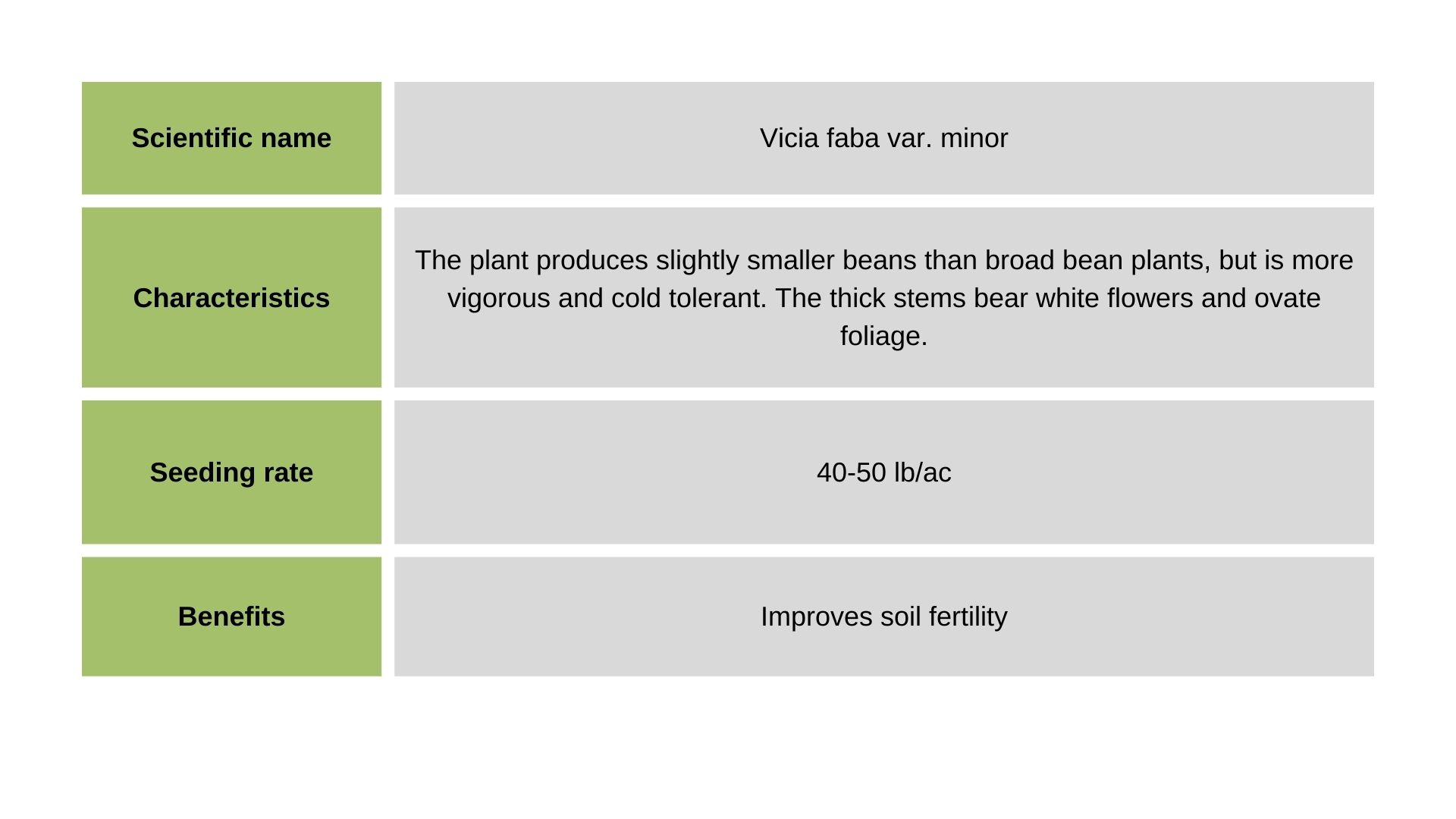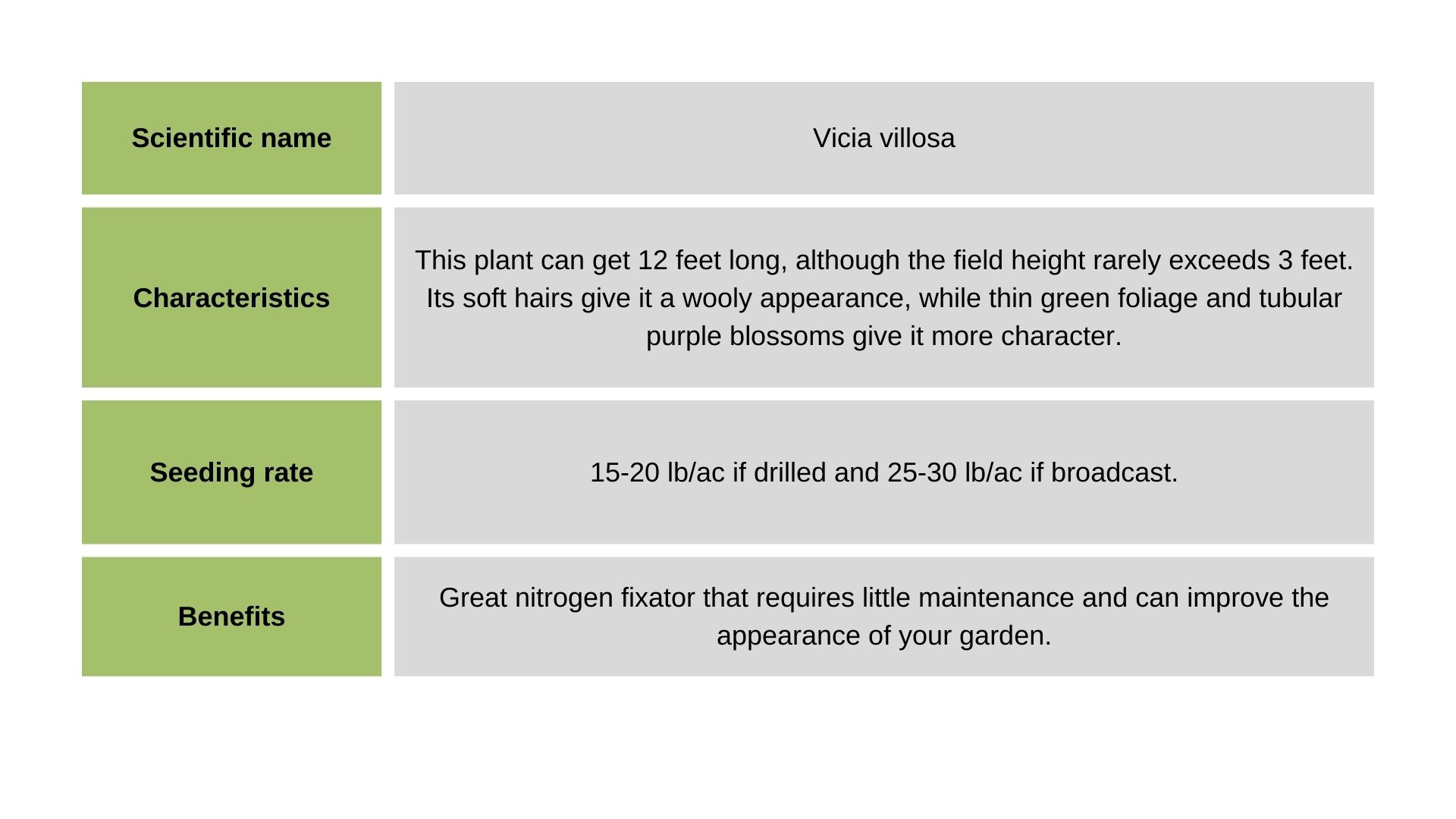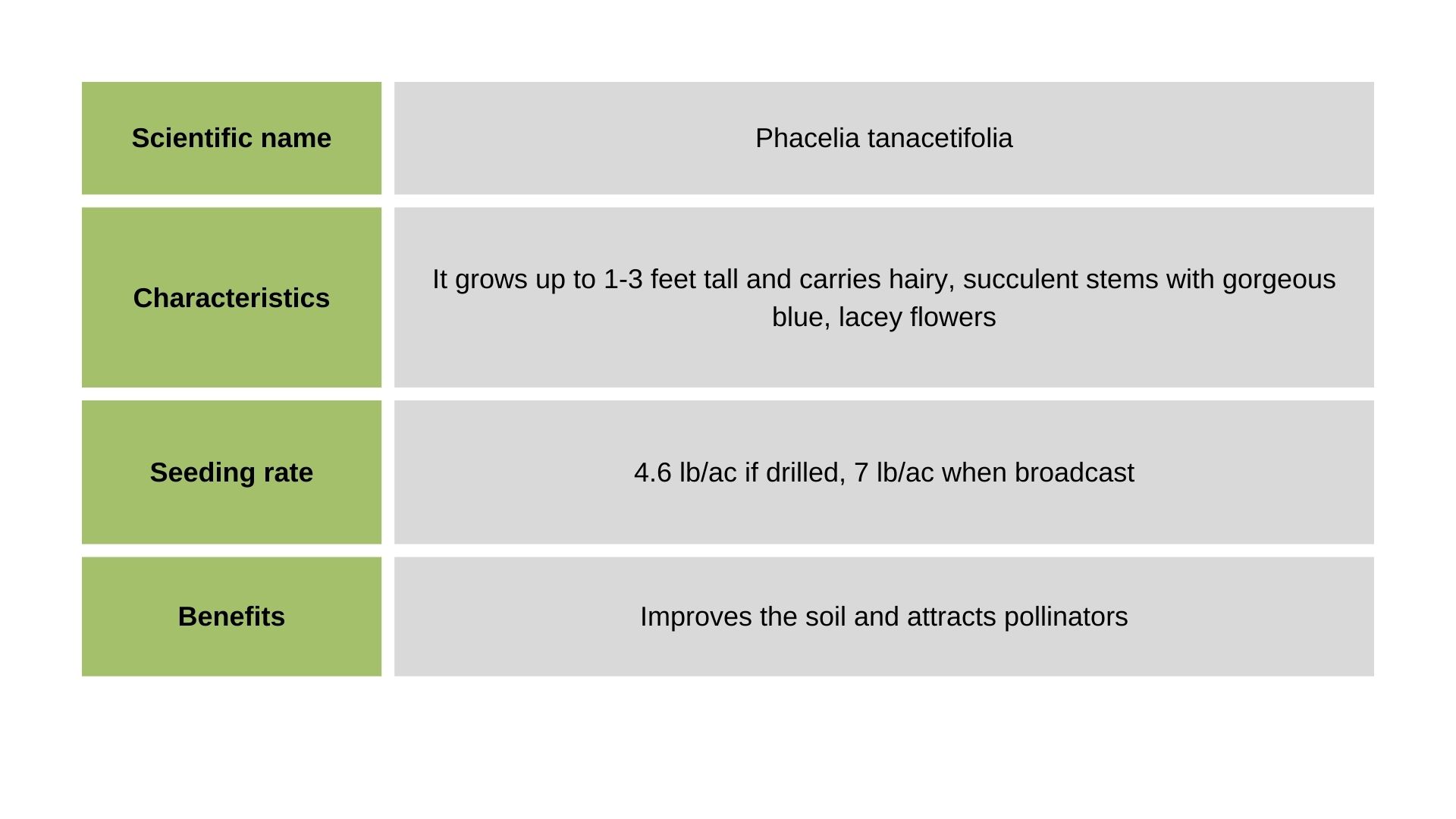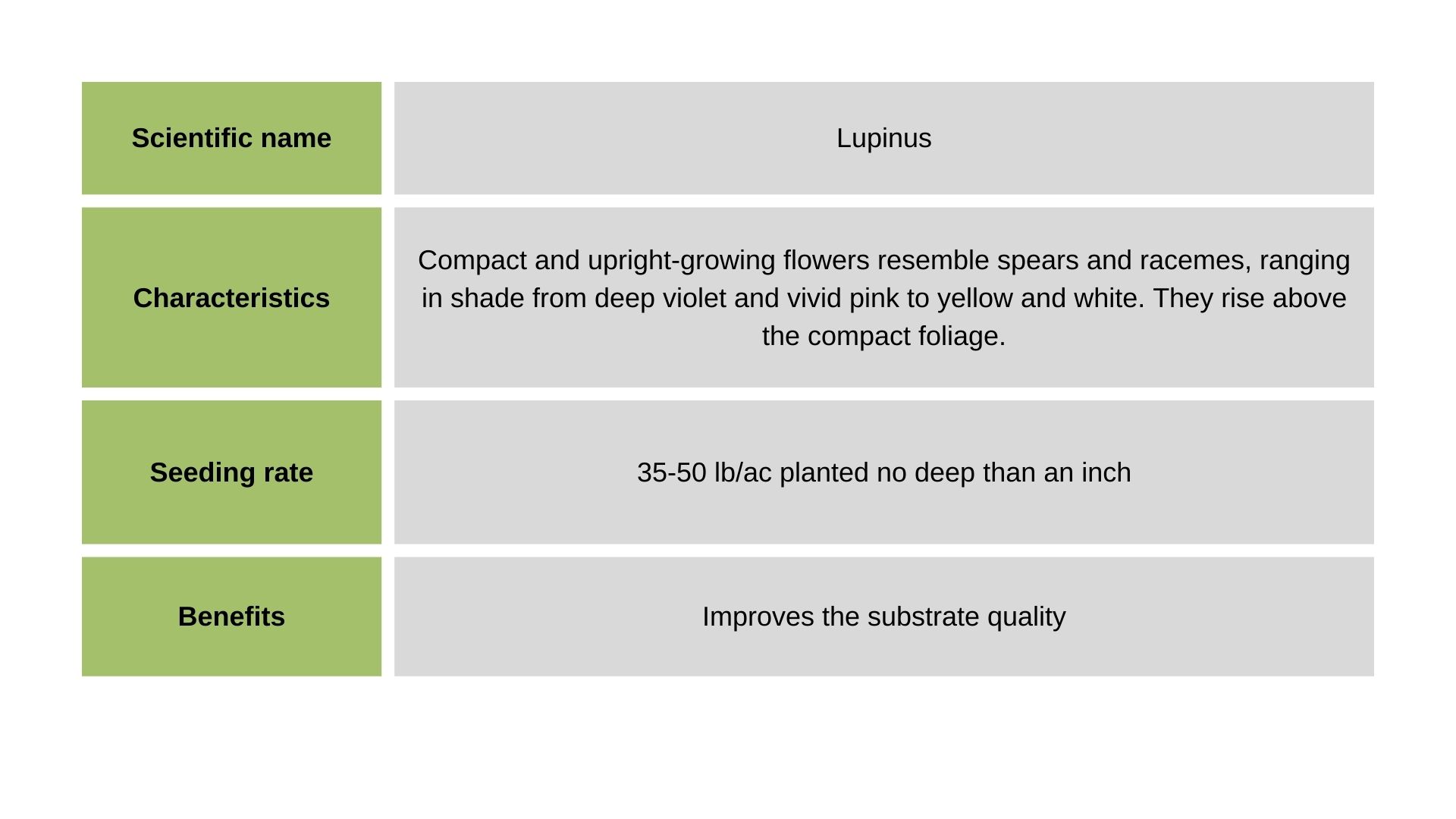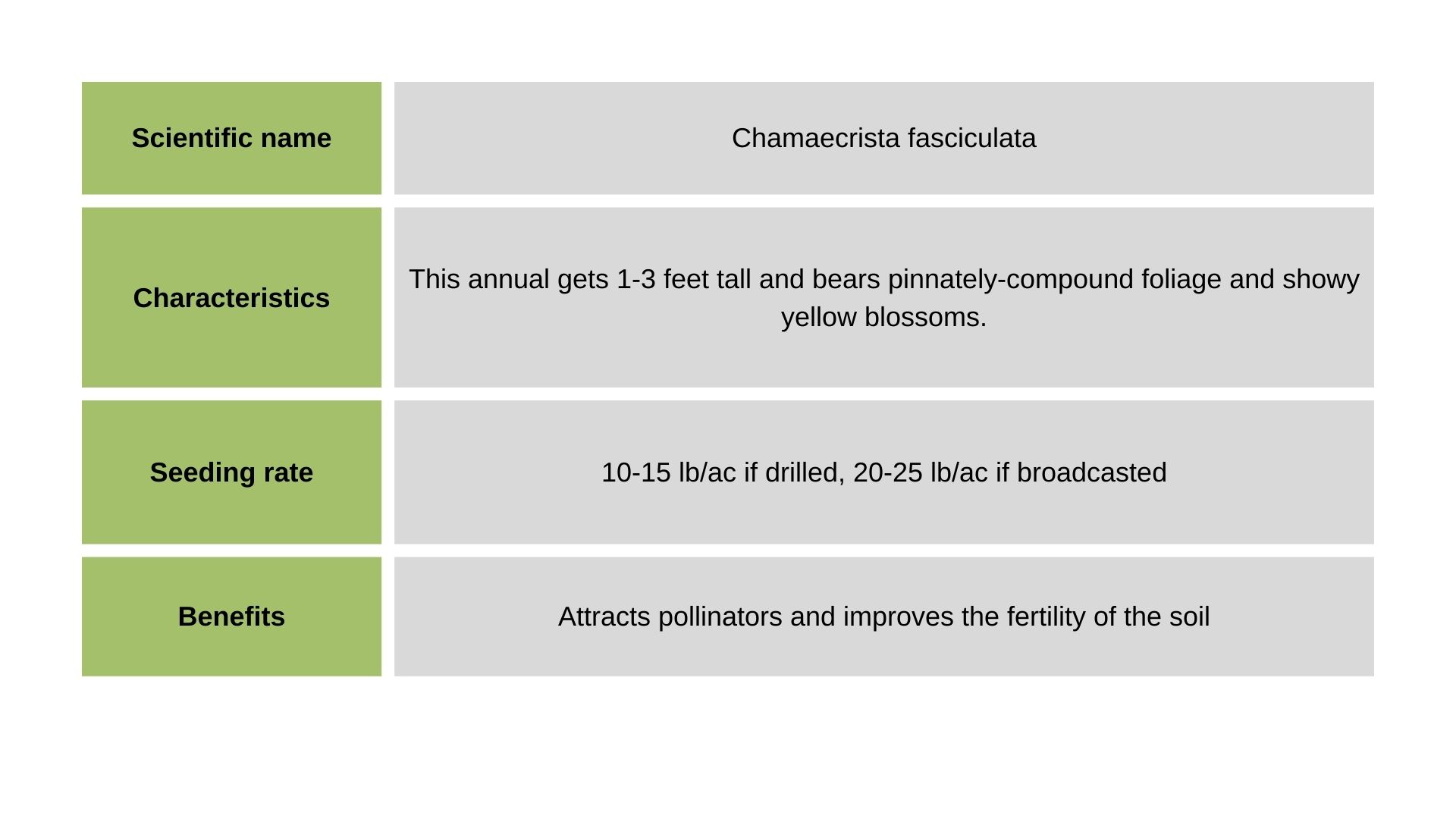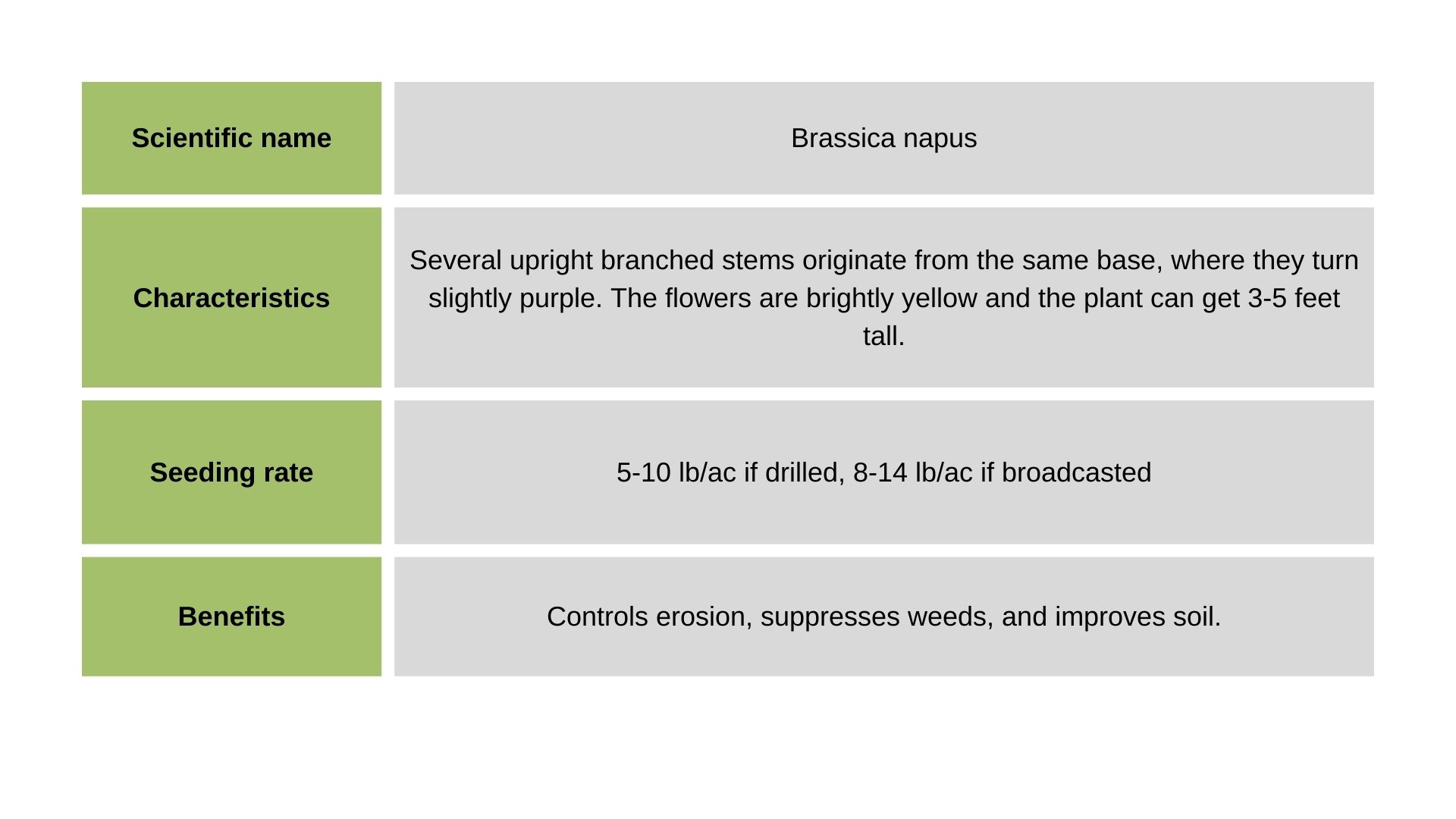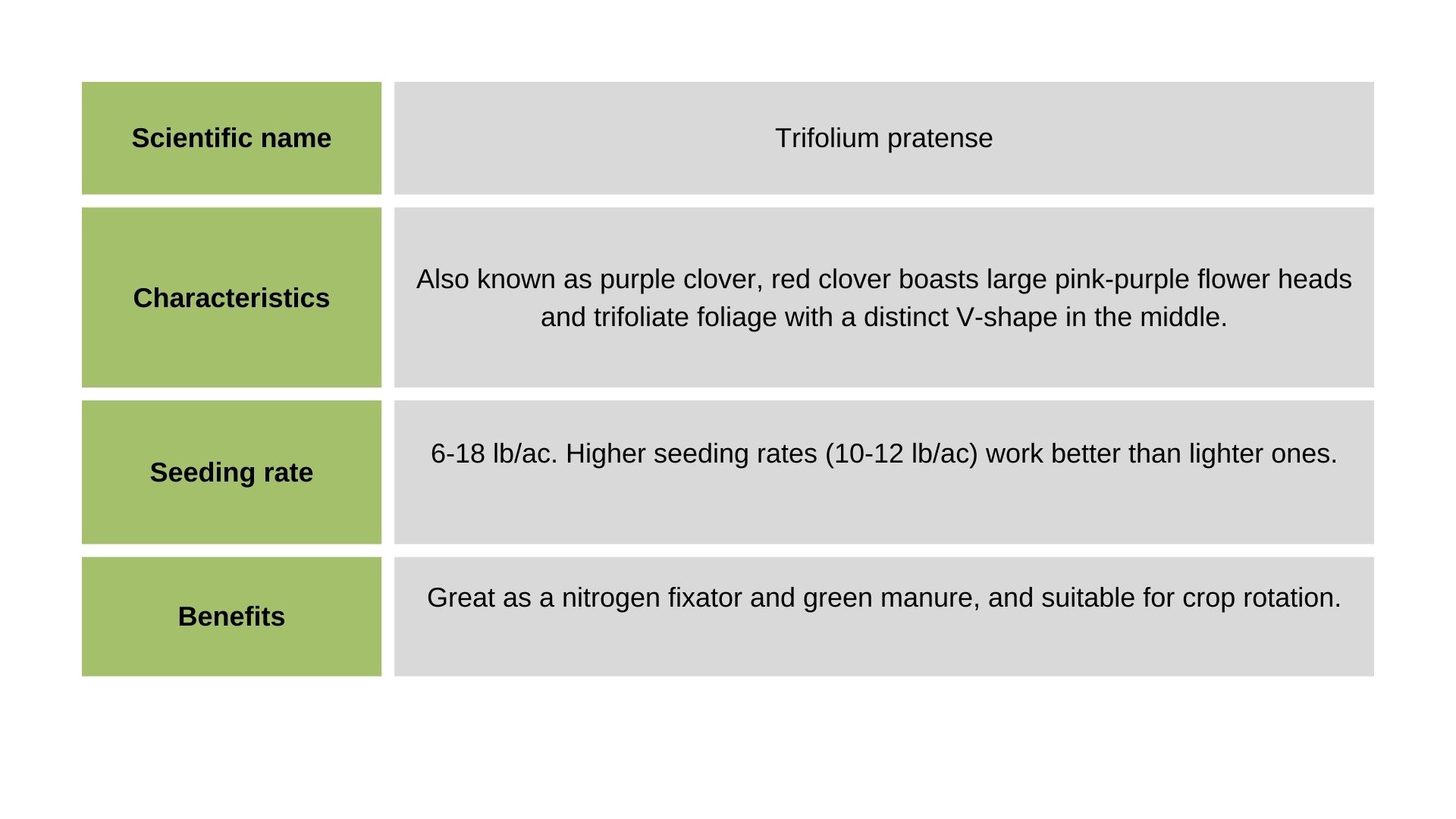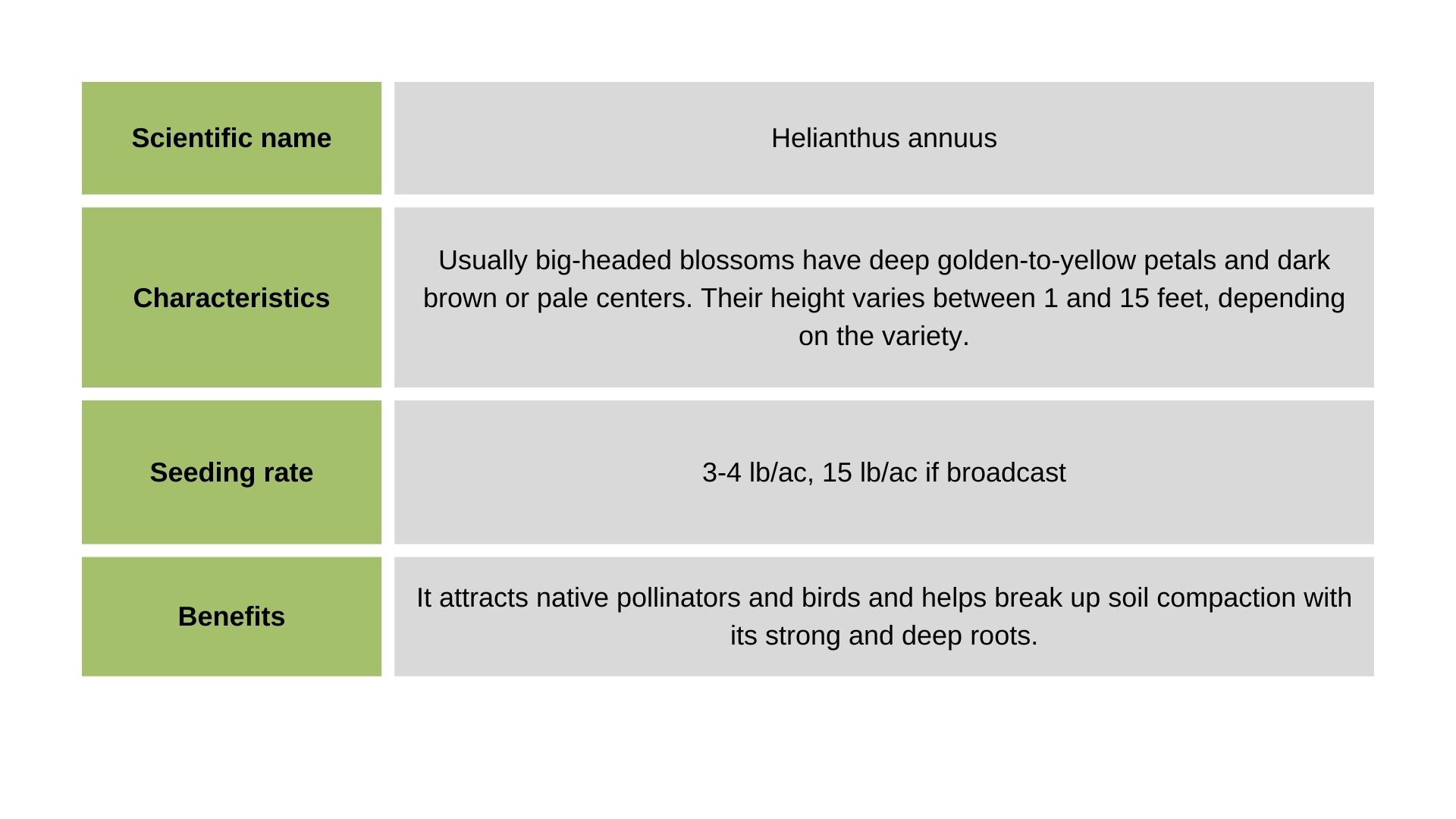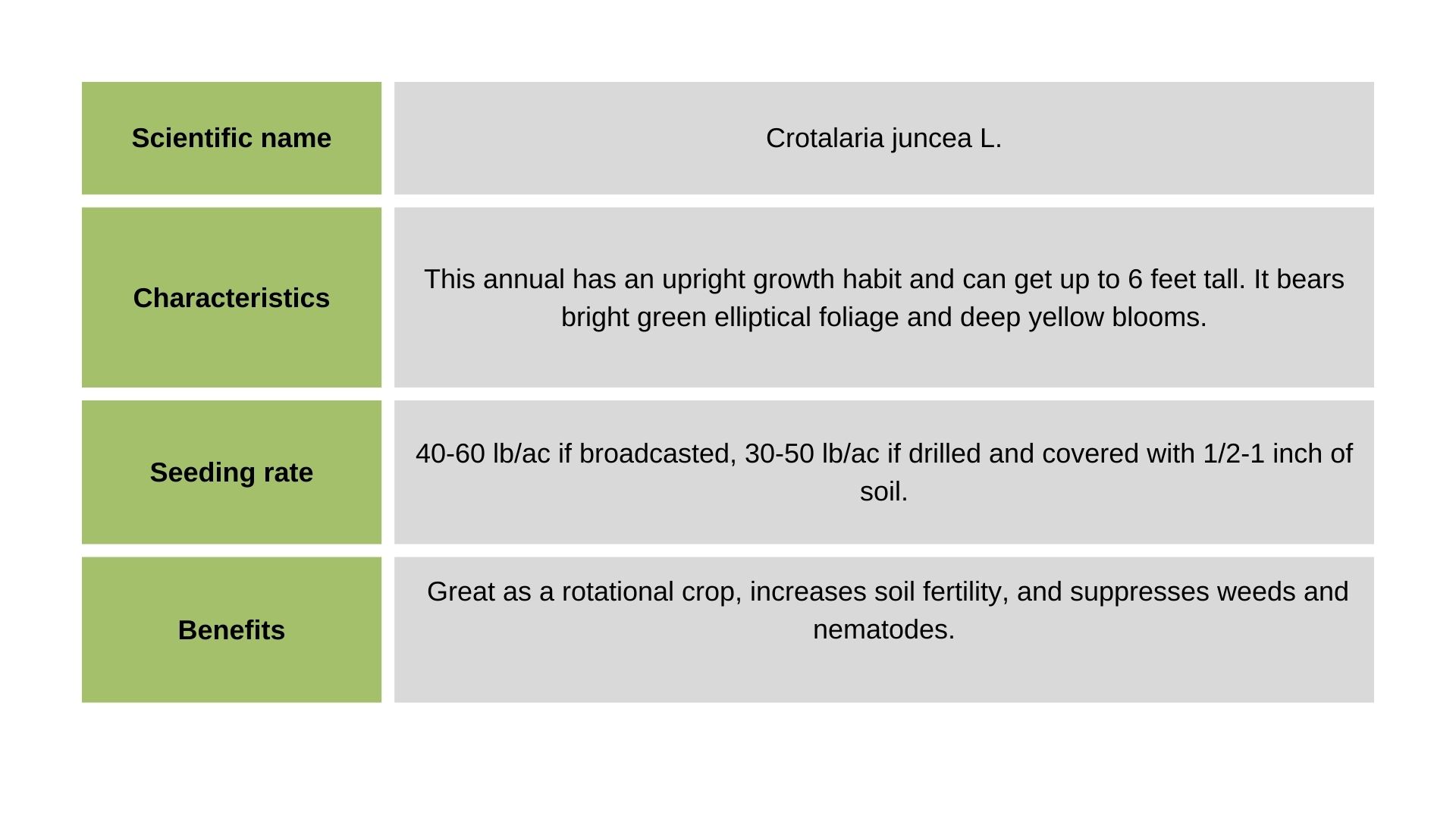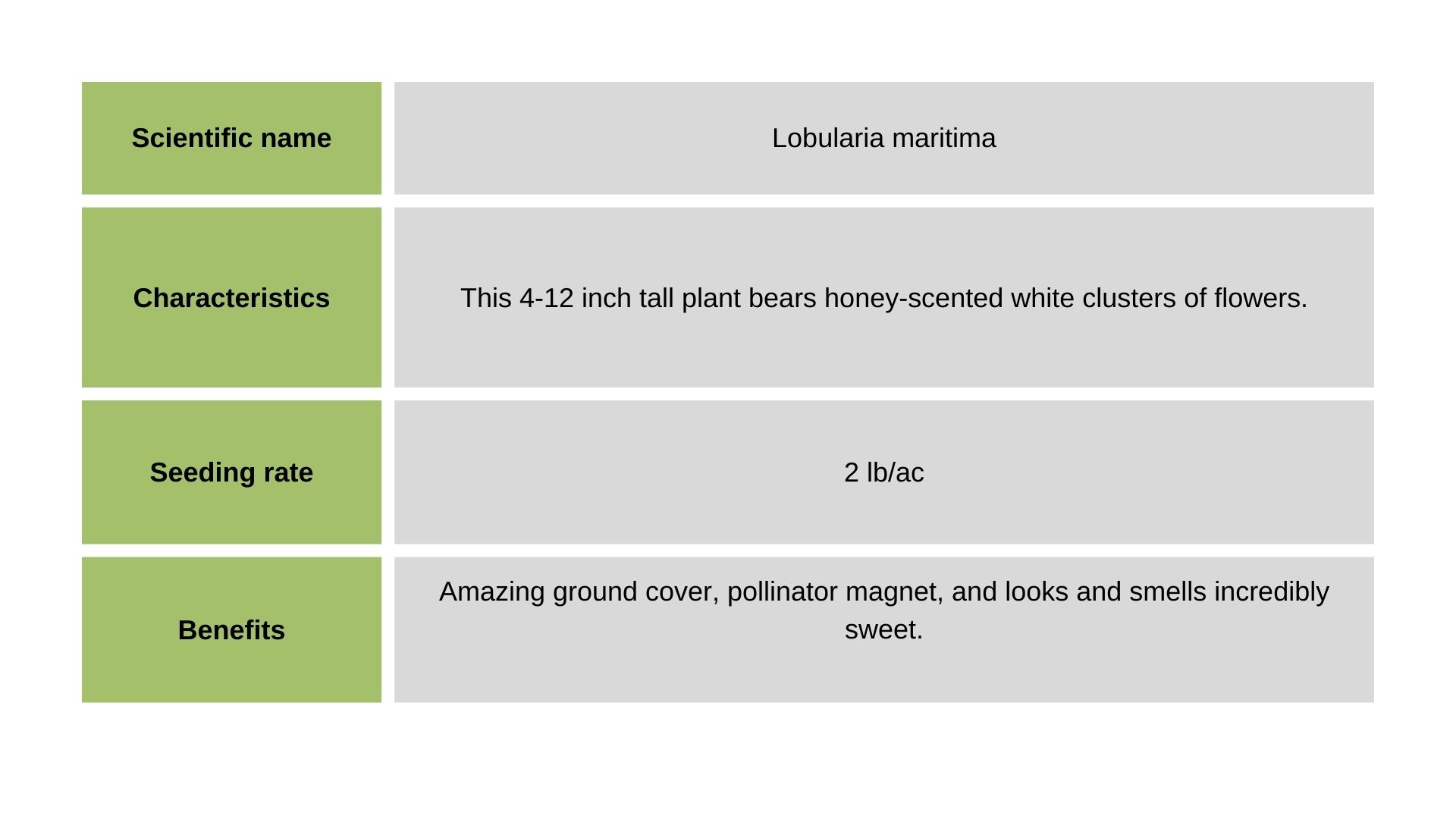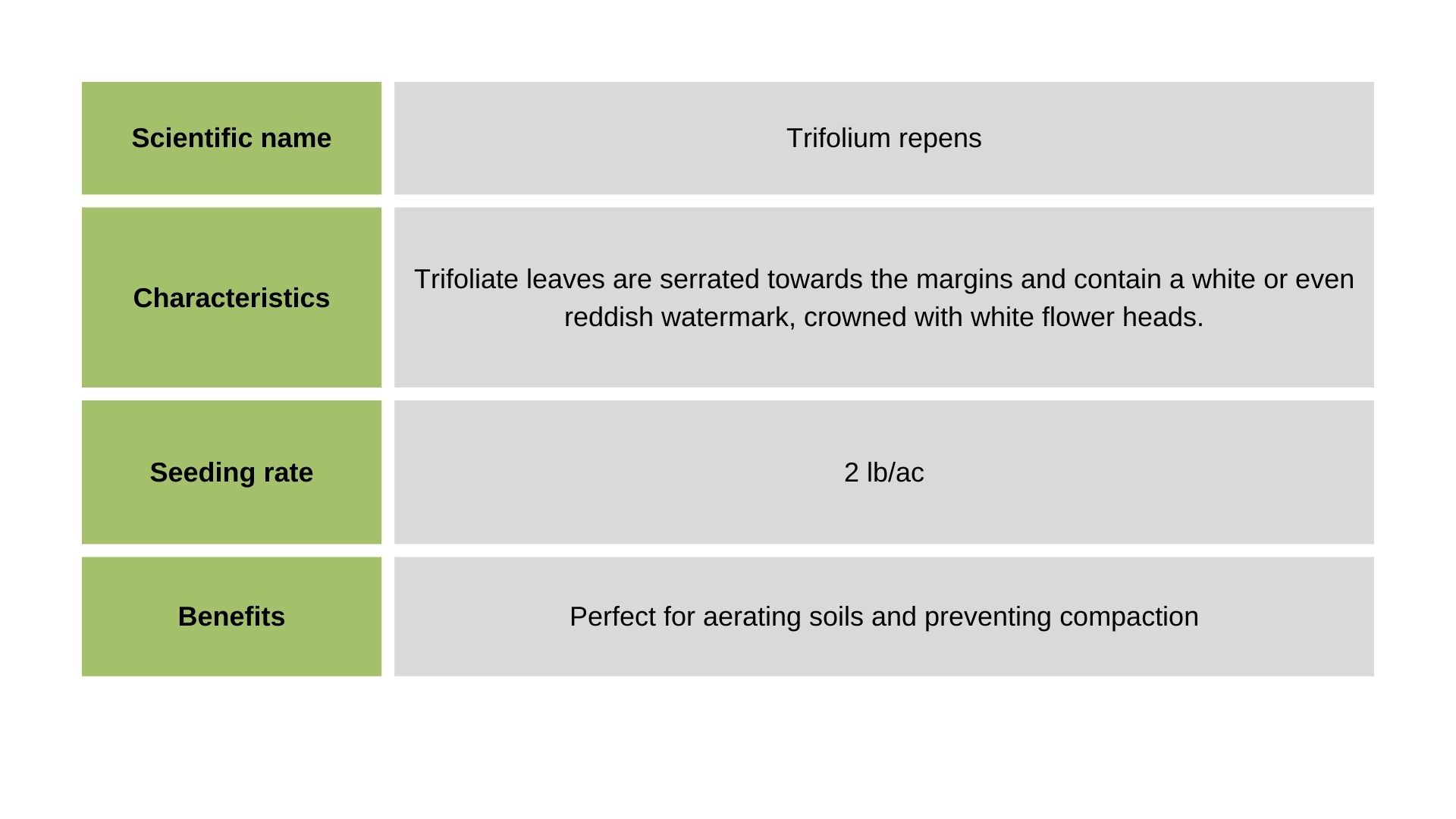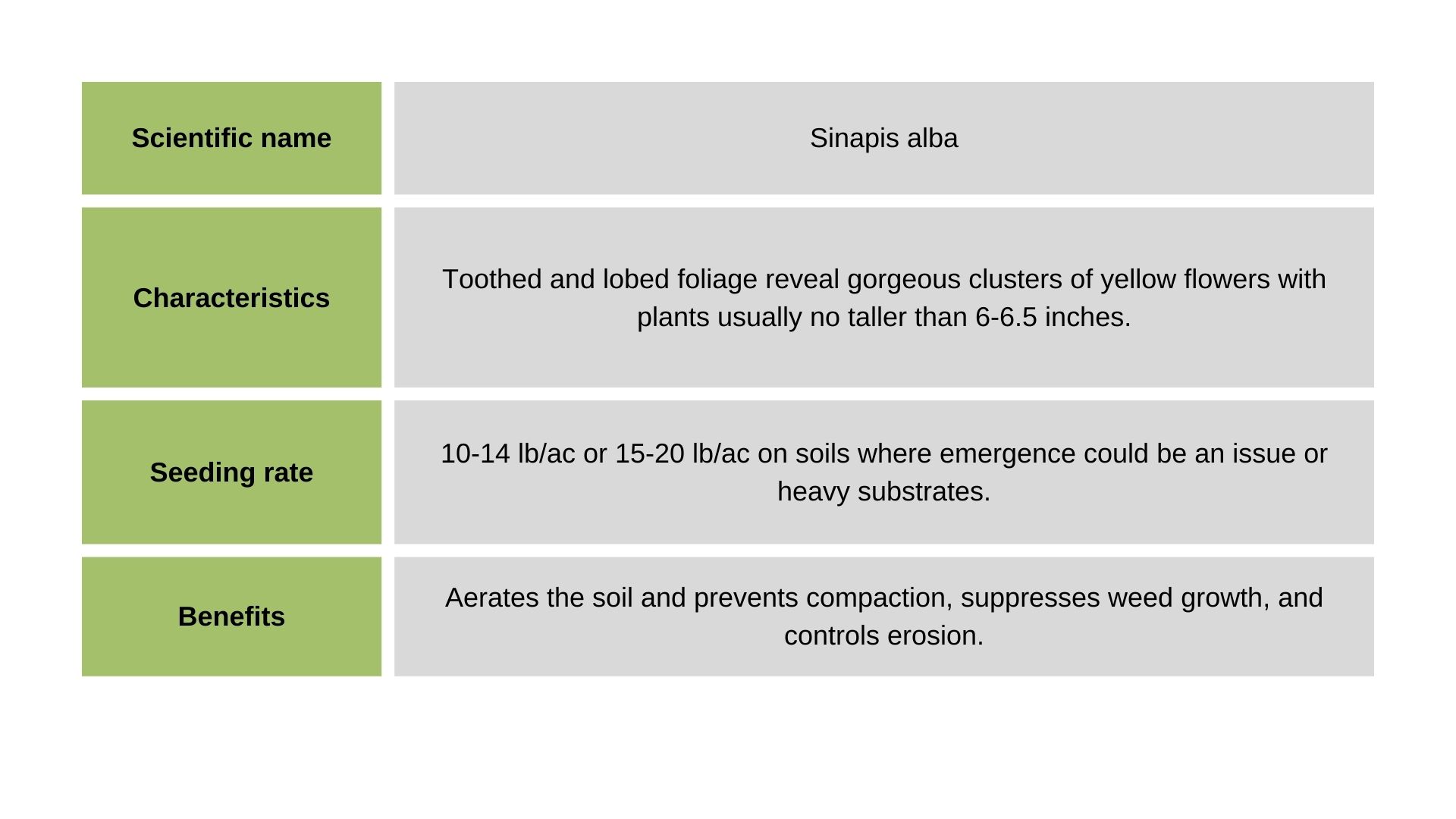Cover crops are some of the most powerful plants out there, and yet, we give them little credit.
They can keep your garden safe from weeds, prevent the soil from drying out and enrich it with nutrients, give you a low-maintenance backyard, and attract beneficial bugs.
Yes, these super plants can double as a pollinator patch and save you some money on expensive fertilizers.
Here are the top 15 cover crops you can use to attract pollinators and keep your garden a little healthier!
1. Alfalfa
Alfalfa is a popular cover crop and is grown all over the US precisely for this purpose. One of the reasons for this is that it easily adapts to almost any setting.
The other, more important reason is that it fixates nitrogen, enriching the soil in this mineral. Or you can use it as a forage crop for your grazing animals.
But today, it’s mostly used as a cover crop all over the world. Alfalfa has deep taproots, so it can break the heavy soils and make them less compacted.
You just have to bear in mind one thing before planting this cover crop – its fall dormancy. This term refers to the size this plant achieves before the first fall frost.
Choose the variety that suits your USDA hardiness zone. But know that it cannot fight back weeds when planted in fall.
Finally, alfalfa is a great food source for bees. And since it blooms into September, it can provide food for these busy workers when other natives have started to wilt.
2. Common Buckwheat
Buckwheat is a popular cover crop, and for good reason. It flowers quickly and you can easily kill it by mowing, rolling, or tilling. And the best part is that you can plant your veggies into the plot soon after this.
Common buckwheat is a popular pollinator magnet, especially near brassicas and tomatoes. They help deter aphids and pollinate veggies.
Another great thing about it is that it tolerates virtually any type of substrate, including clay and sand, so it’s perfect for new gardens where you can use it as a green manure.
Green manures are fast-growing crops that help aerate the soil, control erosion, and suppress weeds that you later cut down and work into the soil to enrich it with more nutrients.
It won’t invade your garden, and even if it does pop up after you cut it down, you can easily hand pull it.
The frost will kill the common buckwheat, so it’s ideal for use during warmer seasons, especially since it requires temperatures of around 70°F to germinate.
It takes about 30 days from seed to flower. At this stage, you can either cut it down or let it grow until frost kills it to attract as many pollinators as possible.
Bonus: Buckwheat releases acidic substances into the soil that help transform unavailable phosphorus into the form plants can use. (1)
3. Crimson Clover
This plant is quite popular among beekeepers because honey bees love its nectar. They are the main pollinators of this clover, although wind and rain account for around 13-20%. (2)
Crimson clover has shorter sepals than other varieties, making it a perfect choice for honey bees.
It provides nectar for these bees between April and June, and after this period is over, you can terminate it and use it to enrich your soil with organic matter, nitrogen in particular.
And if your goal is to create a wildlife-friendly garden, you can let it grow through winter when wild turkeys and deer can nibble on its foliage.
Crimson clover has the best chances of germination when temperatures are consistently around 60°F, but not cooler than that.
Use it as a winter cover crop to prevent erosion and interplant it with white clover for more interest around your garden.
4. Field Beans
These legumes are great at fixating nitrogen and enriching the soil in this nutrient. However, you will have to terminate them before they flower and start producing fruit because they will use all the nitrogen themselves.
And if your soil already contains enough nitrogen, you can let these beans flower and attract pollinators such as bumblebees.
After you cut the field beans, you can use them as green manure and mulch your yard with it. This is a great way to improve your garden soil because it will add plenty of organic material back to it and benefit the microbial activity.
Mulching with field beans will also keep the soil moist for longer, reducing the watering frequency and the overall amount of work you have to do around the garden.
It will also suppress the weeds if you place a thick layer of this kind of mulch, preventing them from emerging.
5. Hairy Vetch
This plant isn’t just a pretty face. It is a terrific worker, inviting all sorts of pollinators to your garden.
Hairy vetch is a perfect choice for colder climates due to its ability to withstand cold temperatures. It can survive conditions as low as 30°F while suppressing weeds without trouble.
This ability to tolerate cold conditions makes it an excellent food source for honey bees and bumblebees in early spring and late fall.
Plant it in early spring, sometime before sowing sweetcorn. It germinates best when the temperatures are between 60-70°F.
Hairy vetch isn’t demanding about the type of substrate it grows in, the amount of water it gets, or fertilizer. Simply sow it into the earth and it will rise.
However, it does self-seed, so make sure to have a control plan if it gets too freaky. It can suffocate your veggies as it climbs all over them, so you might need to take your pruners and get to work.
6. Lacy Phacelia
This quick-growing, but small annual wildflower will do wonders for your garden. First, it attracts bees and butterflies almost as much as the amazing buckwheat.
Secondly, it has been shown to reduce nitrate in the soils with the excess amount of this substance as well as the population of sugar beet nematodes. (3)
Other reasons why you might consider adding lacy phacelia to your garden include suppressing weeds, ability to grow in poor (rocky and sandy) soils, and the fact that it doesn’t need much moisture to thrive.
It germinates at temperatures of around 60-70°F and will die once the temperatures drop to about 20°F.
Lacy phacelia can self-seed if you don’t deadhead it, so you can use it as a cover crop that will come back year after year. If you don’t want this, make sure to remove its flowers as soon as they start to wilt.
Note: This plant can cause skin irritations and allergies similar to those made by poison ivy and oak in people with sensitive skin.
7. Lupine
This plant has become more and more popular as a cover crop because of its amazing ability to withstand winter.
It flowers in early spring when its newly opened blooms attract all kinds of pollinators, from hummingbirds and butterflies to honey bees and bumblebees.
These plants were formerly believed to uptake all the nutrients from the soil, but we now know that’s not the case. In fact, they fixate nitrogen like all other legumes and enrich their growing medium in this mineral.
They started as annuals, but scientists have bred them and created perennial lupine species that will be the star of your garden for many generations.
Additionally, the lupines growing guide is so easy to follow that you’ll wonder how you’ve lived without it for so long.
They have a long root system that can help erosion, so you can plant it on sloped parts of your garden where soil and nutrients only seem to leave after a heavy rain.
And at the end of their growing season, they give you two options: terminate them and use them as manure or cut them down and prepare them for flowering the following spring.
8. Partridge Peas
This plant is an excellent source of food for bees and butterflies. You’ll frequently see it listed as a part of food plot seed mixes because even some birds like to nibble on it.
Additionally, partridge peas are an amazing cover crop, especially for hot and humid climates such as Texas and southeastern US.
It fixates nitrogen at high rates and can recover depleted soils. It gives back the same amount of nitrogen as the application of 100 lb/ac of the nitrogen fertilizer. (4)
And just like any other legume, if you use it as green manure, it can improve overall soil fertility, improving the amount of nitrogen available to plants and the concentration of phosphorus and carbon, positively affecting the microbial activity. (5)
Partridge pea is also an excellent weed suppressant, especially if you combine it with other cover crops such as buckwheat or the slower-emerging pigeon pea.
Plant it in late winter or early spring to keep the soil covered until warmer months.
Bonus: Partridge pea is fairly resistant to pests and diseases.
9. Rapeseed
This plant from the mustard family has numerous benefits. It’s grown commercially for its seeds that are used to make canola or rapeseed oil, but it has other functions, even for small scale farmers.
Its flowers are an important food source for honey bees, one of its most lucrative pollinators.
And the annual plants can be grown as food for grazing animals, poultry, etc.
Furthermore, rapeseed plants are packed closely together, so they work amazingly at preventing weeds from emerging.
You can also use it as a rotational crop for various plants that aren’t in the cabbage family. That’s because it is resistant to many diseases that attack these veggies.
Just make sure to plant it in the same plot every 4 years because it can get affected by pathogens that accumulate in the soil. (6)
This plant has deep taproots, so it can aerate the soil a bit, making it less compact.
Finally, rapeseed is highly drought-tolerant, so you won’t have to care for it that much. In fact, the only danger is possibly drowning it in water before it establishes.
10. Red Clover
You’ve more than likely seen this plant in your backyard, thought it was weed and looked for ways to get rid of it.
But don’t be so quick to do so. Red clover can attract bumblebees that are excellent pollinators, fixate nitrogen and enrich your soil in this nutrient, and keep your growing medium from drying out too quickly.
And once its termination time arrives, you can mow it and use it as green manure to improve your soil even more.
Red clover doesn’t suppress well-established weeds, but it can prevent young broadleaf weeds from emerging.
P.S. It can become a weed itself and invade your yard if you don’t kill it in time and work it into your soil.
11. Sunflowers
You’ve surely seen a field full of sunflowers at least once in your life; whether it was while visiting your relatives in the country or traveling around Spain, France, Italy, etc.
And to be honest, not all of these plants are grown for commercial purposes. Some gardeners plant sunflowers as a beneficial crop that attracts numerous pollinators.
At first, honey bees and bumblebees pollinate these plants, but once their seeds start to form, you’ll see finches, cardinals, chickadees, and other seed-eating birds come to visit.
(And if you can be faster than the birds, you can get your own store-quality sunflower seeds!)
Additionally, the long and strong taproot is a great help with erosion, especially when planted on sloped ground. And if that’s not something you need, you can always use them to break the soil compaction and make it more aerated for other plants.
Sunflowers have many companion plants, so grow them together and reap all their benefits.
Finally, most of these plants are drought-tolerant due to their thick stems and long roots that reach deep into the ground and find water in the strangest of places.
12. Sunn Hemp
Sunn hemp is an excellent nitrogen fixator and can produce up to 120-140 pounds of nitrogen in as little as 60-90 days. (7)
This plant is a fast grower and in about two months, it can get up to 4 feet tall. Afterwards, you can terminate it and use it as green manure to improve the quality of your soil.
You can till it into the substrate or use it as mulch to suppress weeds, although it will do that while alive as well.
Sunn hemp contains allelochemicals which can discourage or delay the germination of weed seeds and growth stages of nematodes. That’s why they are an excellent rotational crop and can increase the yield since your main crop won’t have to deal with these issues. (8)
13. Sweet Alyssum
This plant attracts almost every pollinator, from bees and stingless wasps to butterflies and flower flies. (9)
It is an excellent food source for other beneficial insects, such as predatory wasps, so aside from keeping your vegetable plot pollinated, it can also keep it pest-free.
Additionally, the creeping habit of sweet alyssum makes it an excellent ground cover that suppresses weed growth and rids you of extra garden work.
It takes about 5 days to germinate after you scatter it directly on the outside soil. And after you’ve used all its benefits, you can easily dig it out, throw it into the compost or till it back into the soil.
Sweet alyssum is an excellent green manure that provides a good deal of carbon and organic content.
14. White Clover
White clover is an ideal plant if you want to amend your clay soil and make it more livable for other plants. Its thick root system makes canals within the substrate, making it more loose and aerated.
Additionally, honey bees adore the white clover flowers and cross-pollinate it, allowing for varieties with pinkish hues to emerge.
You can use this cover crop as a live mulch as long as you prevent it from invading your entire garden and competing with other plants for nutrients and moisture.
White clover is also a great walkable ground cover alternative to high-maintenance lawns. It doesn’t require a lot of care, is resilient, and can tolerate high traffic excellently.
Finally, you can use it on slopes that frequently erode because its thick root will keep the soil and all of its nutrients in place, making that place a better habitat for other plants.
Plant it in fall and use it as a winter crop just for this purpose. The green above-ground growth may die back, but the roots will continue to keep the soil in place.
15. Yellow Mustard
Yellow mustard might not be the first cover crop to cross your mind, but wait until you learn about all its benefits.
It doesn’t require too much of your care and grows very quickly, so you’ll be able to reap its benefits in no time. Sow it after the summer harvest, and you’ll quickly have mature plants with seeds on the way.
The plant can self-seed, so make sure to deadhead some of the flowers if you don’t want it to spread all over your garden.
You can also plant it in spring when it can serve as mulch for future crops. Mow it and cover it with a landscaping fabric until it decomposes, working the debris into the substrate or leaving it on the surface.
However, one of the main reasons why yellow mustard is such a great cover crop are the glucosinolates (GLSs) that it contains. This compound protects it from various pests and diseases, but can also keep your other plants safe. (10)
You can terminate this plant and till it into the ground so that it can help fight off diseases caused by fungi and oomycetes.
It can tolerate cooler conditions, so don’t miss out on fall planting. It will enrich your soil, keep it safe from diseases, and provide food to the bees right before winter strikes.
Final Thoughts
If you want to turn a part of your garden into a pollinator patch and improve the overall health of your soil, you can try growing any of these 15 plants.
They will increase pollinator activity, positively affect the microbial community in the growing medium, and benefit your local ecosystem.
References:
1. Myers, R. (2018). Growing Buckwheat for Grain or Cover Crop Use. MU Extension.
2. Knight, W. E. & Green, H. B. (1957). Bees Needed for Pollination of Crimson Clover. Miss. Farm Res.
3. Lacy Phacelia (Phacelia tanacetifolia) Plant Guide (n.d.). USDA Plants Database.
4. Duncan, J. (2022). Partridge Pea: A Cover Crop for Hot and Humid Areas. NCAT: ATTRA Sustainable Agriculture
5. Zhong, Z., Huang, X., Feng, D., Xing, S., & Weng, B. (2018). Long-Term Effects of Legume Mulching on Soil Chemical Properties and Bacterial Community Composition and Structure. Agriculture, Ecosystems & Environment.
6. Satell, R., Dick, R., Ingham, R., Karow, R., Kaufman, D., & McGrath, D. (1998). Rapeseed (Brassica campestris/Brassica napus). OSU, Oregon Cover Crops.
7. Sunn Hemp: A Cover Crop for Southern and Tropical Farming Systems (1999). USDA, Soil Quality – Agronomy Technical Note.
8. Fall, T., Freidenreich, A., Swartz, S., Vincent, C., Li, Y., & Brym, Z. (2020). Questions and Answers for Using Sunn Hemp (Crotalaria juncea L.) as a Green Manure Cover Crop. UF/IFAS Extension.
9. Mahr, S. (n.d.). Sweet Alyssum, Lobularia maritima. UW-Madison, Wisconsin Horticulture Division of Extension.
10. Poveda, J., Eugui, D., & Velasco, P. (2020). Natural Control of Plant Pathogens through Glucosinolates: An Effective Strategy against Fungi and Oomycetes. Phytochemistry Reviews.

